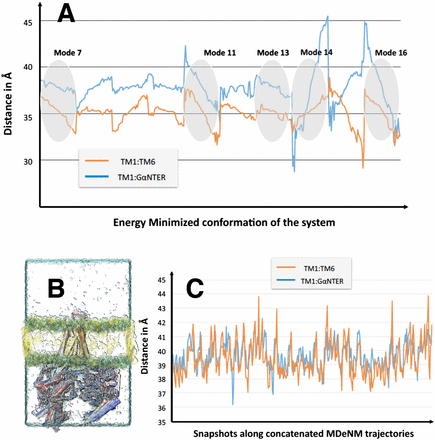Proceedings of the National Academy of Sciences of the United States of America, 2015, Volume: 112, Issue: 5, Pages: 1601-1606, DOI: 10.1073/pnas.1414618112
M. Damian, S. Mary, M. Maingot, C. M’Kadmi, D. Gagne, J.-P. Leyris, S. Denoyelle, G. Gaibelet, L. Gavara, M. Costa, D. Perahia, E. Trinquet, B. Mouillac, S. Galandrin, C. Gales, J.-A. Fehrentz, N. Floquet, J. Martinez, J. Marie, J.-L. Baneres
Abstract
How G protein-coupled receptor conformational dynamics control G protein coupling to trigger signaling is a key but still open question. We addressed this question with a model system composed of the purified ghrelin receptor GHS-R1a assembled into lipid disks. Combining receptor labeling through genetic incorporation of unnatural amino acids, lanthanide resonance energy transfer, and normal mode analyses, we directly demonstrate the occurrence of two distinct receptor:Gq assemblies with different geometries whose relative populations parallel the activation state of the receptor. The first of these assemblies is a preassembled complex with the receptor in its basal conformation. This complex is specific of Gq and is not obsd. with Gi. The second one is an active assembly in which the receptor in its active conformation triggers G protein activation. The active complex is present even in the absence of agonist, in a direct relationship with the high constitutive activity of the ghrelin receptor. These data provide direct evidence of a mechanism for ghrelin receptor-mediated Gq signaling in which transition of the receptor from an inactive to an active conformation is accompanied by a rearrangement of a preassembled receptor:G protein complex, ultimately leading to G protein activation and signaling.


